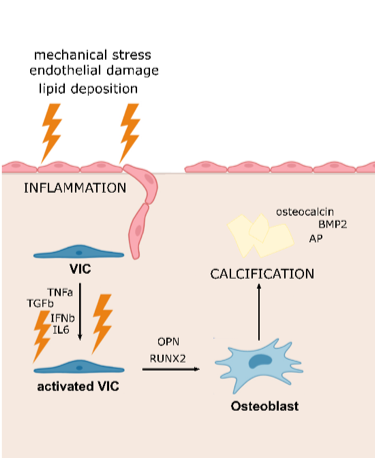Another translational research goal is the development of a drug against aortic valve stenosis. Despite its high prevalence especially in the elderly there is still no pharmacological therapy available to counteract the disease. We identified a conserved calcification pathway responsible for the osteoblastic phenotype switch of human valvular fibroblasts towards functional osteoblasts. We could show how a specifically glycosylated protein is released from the extracellular matrix upon mechanical stress stimulates innate immunity and thus, initiates calcification. Performing in silico modelling and immunoprecipitation we characterized the identified ligand-receptor interaction. We identified specific knock-out mice protected from the development of aortic valve stenosis. Moreover, in a cooperation with the McGill University and the UK Biobank we found that variants of the firstly described pathway significantly associate with aortic valve stenosis in humans in a genome-wide association analysis of > 300.000 patients. Our data identify an evolutionarily conserved pathway of morphogenesis and calcification, paving the way for novel therapeutic strategies for detecting and counteracting aortic valve stenosis in humans. We are currently testing the first inhibitors of the revealed pathway for their effectiveness and aspire rapid translation towards a clinical application.

